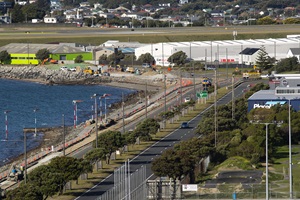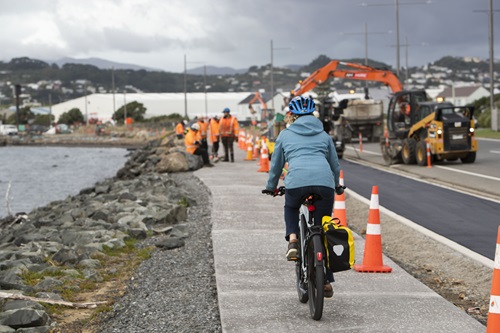So when Wellington City Council needed 35,000 plants for the Cobham Drive upgrade, making the right selection was vital.
Biodiversity Specialist Plants Anita Benbrook says it was not only important resilient plants were chosen, but that they had time to adapt to their new environment before being planted. That’s why a special-purpose nursery was set up in Lyall Bay. It has a rabbit-proof fence that will keep the plants secure and protect them from pests, but allow the wind to harden them off.
“We need to harden them off to adapt to a coastal condition, otherwise half the plants may not survive,” Anita says. “Plants grown in a nursery are quite soft – it’s a bit like standing outside in the wind on a winter’s day without a puffer jacket – you can tolerate it for a short time but if you’re out there for a long time you’ll eventually become hypothermic.”
READ MORE:
Fun for kids these school holidays
Changes to plastic recycling collection
The plants were grown at Leacroft Nursery from eco-sourced seeds that were collected about two years ago from Wellington specimens. They were moved to the Lyall Bay nursery about two months ago.
“We wanted these plants taken to a site near where they will be planted, where they’d be getting the salt-laden winds coming from two directions. The plants will actually turn a bluer colour and get a cuticle layer on their leaves which will harden them off to cope with the wind and the salt,” Anita says.
Now that they have toughened up, the plants are in the process of being planted among the newly developed footpath and separate two-way cycle path along the seaward side of Cobham Drive. The walking and biking improvements are part of Council’s plan to turn the coastal recreation area into an eastern gateway for Wellington.

Anita says Wharariki or mountain flax (Phormium cookianum), wiwi (Ficinia nodosa), and taupata (Coprosma repens) are the first to go in the ground. These plants will grow to create shelter for other species that will be inter-planted in about three years’ time.
“Get your shelter first, and then add the pretty ones,” she says.
Giant boulders, which were already on site, have been re-utilised and incorporated into the landscape to blend with Wellington’s rocky foreshore. The planting around the boulders will create a sheltered habitat for penguins that frequent the site for nesting.
Transport Place Planning Delivery Project Manager Veronica Byrne says the landscaping and planting design also aims to deter penguins from crossing the state highway, as they have been known to do in the past.
She says Cobham Drive project contractors Downer will be responsible for plant maintenance over the next five years, and working with them and landscape designers Isthmus had been a great experience.
Veronica says she understands the project has caused some disruption to people and their normal routines, but as it approaches completion she hopes Cobham Drive will be a space that everyone can enjoy.
“Every time you land in Wellington, Cobham Drive is one of the first places people see. We want to ensure that we deliver something that Wellingtonians are proud of.”
